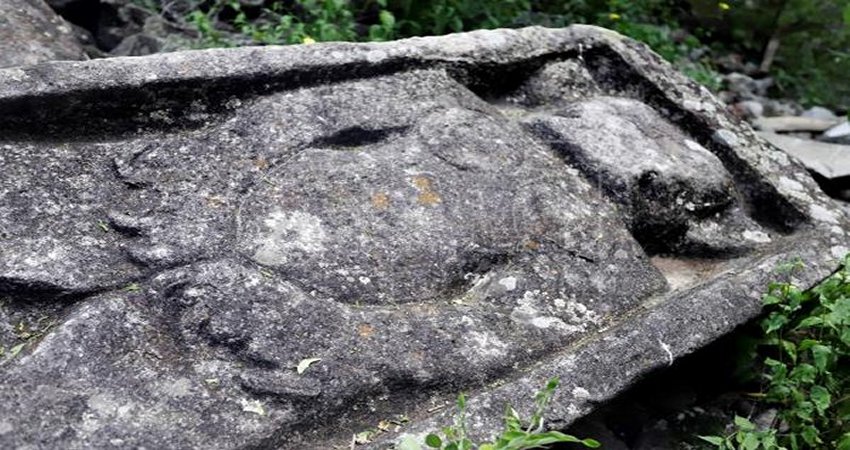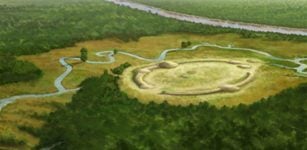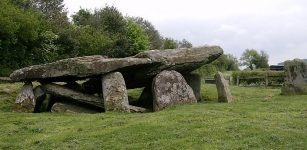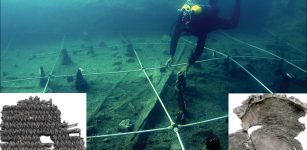How Far South Did Prehistoric Highly Skilled Polynesian Seafarers Sail?
Conny Waters – MessageToEagle.com – Prehistoric Polynesian seafarers were exceptionally skilled navigators, known for embarking on some of the longest and most technically challenging voyages in prehistory. However, there is ongoing debate among scholars about whether they ever ventured into very high latitudes to make landfall in Antarctica.
Fieldwork localities at Sandy Bay: Locations X, A–C, Y and features S5, A, B, C in Area S. Brown specks on the beach and dunes are sea lion adults and pups. Credit: Archaeology in Oceania (2024). DOI: 10.1002/arco.5337
This question remains a topic of research and discussion within the academic community.
An international team of archaeologists and paleoecologists focused on an investigation to address this inquiry by meticulously examining material evidence of prehistoric, specifically pre-European-era, voyaging. The researchers focused on archaeological middens, or refuse deposits, located in the remote subantarctic region of the southwest Pacific.
The team worked within an archaeological site at Sandy Bay, Enderby Island, 500 km south of Stewart Island. Enderby Island, the northernmost of the Auckland Islands group at 51°S, is the southernmost known prehistoric landfall, despite extensive searches for such sites further south near Antarctica.
Hawaiian navigators sailing multi-hulled canoe, c. 1781. Image upploader: Makthorpe – Artist: John Webber, artist aboard Cook’s ship. Source: Scanned from page 20 of the following book. Grant, Glenn (2004) Hawai`i Looking Back: An illustrated History of the Islands, Mutual Publishing,
The Sandy Bay site, where eroding dunes exposed thin layers with Polynesian middens and ovens, was first discovered and explored by Atholl Anderson and Gerard O’Regan. It was radiocarbon dated in 1998, with more investigations in 2003, providing the first evidence of pre-European Polynesian occupation at Sandy Bay.
In 2020, the newly assembled team of researchers undertook a re-excavation of the site. By this time, further erosion had exposed additional bone and charcoal materials suitable for radiocarbon dating, thereby allowing the construction of a more precise timeline than previously achievable.
Subsequently, the researchers employed Bayesian statistical analysis on all available radiocarbon dates to model the probable commencement and conclusion dates of prehistoric human occupation at the site.
The combined results show that the Sandy Bay site was most probably first occupied about AD 1250–1320, consistent with known ages for the same colonizing event in New Zealand and other remote islands of East Polynesia,” Dr. Wilmshurst says.
The historical records from Sandy Bay indicate that the area was occupied intermittently for approximately 100 years. Supporting this theory of sporadic occupation is the pollen analysis conducted on samples taken meters away from the Sandy Bay middens, as well as other locations on the main Auckland and Campbell Islands further south.
This analysis revealed no signs of prehistoric human impact on the island’s vegetation, suggesting limited and non-continuous human presence during that period.
Global cooling during the Little Ice Age likely forced retreat to Stewart Island (47°S), and the Auckland Islands weren’t reoccupied until Europeans rediscovered them in 1806.
In response to claims that prehistoric voyagers reached Antarctica, researchers discuss numerous physical and practical constraints.
The researchers focus on several critical factors like the phenomenon of human body heat loss and the requisite calorie intake, the availability of contemporary clothing, advancements in boat and sail technology, and the lack of suitable wood or fiber for boat repairs.
Most notably, there remains an additional 2000 kilometers of frigid, high-breaking oceanic waters and sea ice to navigate south of Sandy Bay before a potential Antarctic landfall could be achieved.
Even with modern technology, the Southern Ocean is difficult to navigate safely.
Prof. Anderson acknowledges ongoing debate about the southern limits of Polynesian seafaring, stating that “The dating results from Sandy Bay now make Enderby Island the southernmost known site for prehistoric Polynesian habitation.”
Polynesian exploration into high latitudes showcases remarkable seafaring skills. However, radiocarbon dating evidence shows they stopped about 2, 000 kilometers short of Antarctica.
“This research reveals the adaptability and resilience of early Polynesian navigators in this remote and harsh sector of the South Pacific Ocean, as well as the significant limitations to successful return travel that would have arisen if ventures any further south had occurred, the researcher said.”
Source – Manaaki Whenua – Landcare Research
Written by Conny Waters – MessageTOEagle.com – AncientPages.com Staff Writer












